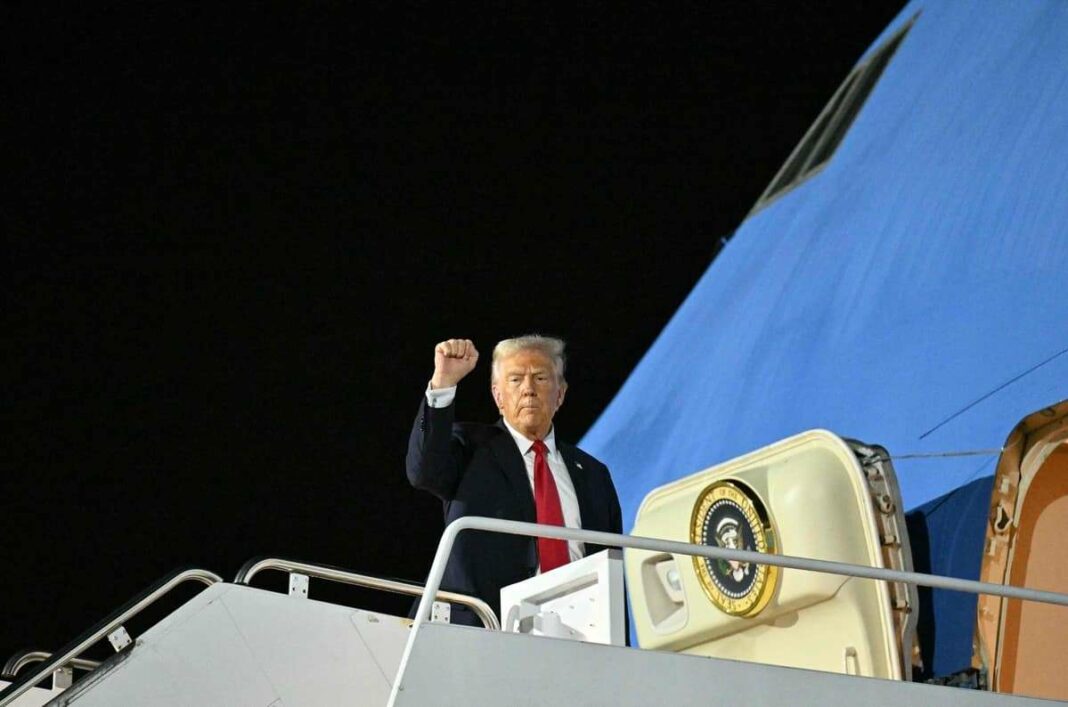Donald Trump plans to implement a 25% tariff on steel and aluminum imports, raising concerns among trade partners, especially Canada, the largest supplier. Financial markets remain stable despite the impending tariffs, which echo previous measures from his first term. Responses from affected sectors and countries highlight fears of significant disruptions. New “reciprocal tariffs” aimed at aligning import and domestic taxes are also expected. The situation continues to evolve amid ongoing tensions in U.S.-China trade relations.
The Upcoming Tariffs on Steel and Aluminum
Donald Trump is poised to escalate the ongoing “trade war” starting Monday with the implementation of a 25% tariff on steel and aluminum imports, should he choose to proceed with his plan.
Despite Trump’s recent inconsistencies regarding trade with Canada, Mexico, and China, financial markets remained relatively stable on Monday, showing a slight uptick in Wall Street and positive closure in European markets.
During an impromptu press conference aboard Air Force One, Trump stated, “I will announce tariffs on steel on Monday. All steel entering the United States will be subject to a 25% tariff.” He further indicated that aluminum imports would face similar penalties. This move could have substantial implications for Canada, which is the largest supplier of steel and aluminum to the U.S., along with Brazil, Mexico, and South Korea.
Reactions to Trump’s Tariff Plans
The UK Steel federation voiced concerns about the potential “devastating blow” to an already struggling sector. Kevin Hassett, a key economic advisor to Trump, remarked on CNBC that steel production is crucial for realizing Trump’s vision of a “golden age” for America.
Reflecting on previous tariffs imposed during his first term, Trump had levied 25% tariffs on steel and 10% on aluminum to safeguard U.S. manufacturing against perceived unfair competition. Most of these tariffs were subsequently lifted by Trump himself or by his successor, Joe Biden.
In addition to the steel and aluminum tariffs, Trump announced plans for “reciprocal tariffs” aimed at aligning the taxation of imported goods with U.S. products taxed abroad, which he plans to reveal on Tuesday or Wednesday.
Since taking office, tariffs have been a cornerstone of Trump’s economic strategy to minimize the trade deficit while applying pressure on international trading partners. Responses from these partners have ranged from promises of retaliation to attempts at negotiation.
Catherine Cobden, president of the Canadian Steel Producers Association, called for an immediate reaction, while François Desmarais, the organization’s vice president, warned of “massive” disruptions in the sector, predicting conditions could be worse than those experienced in 2018-2019.
French Foreign Minister Jean-Noël Barrot stated that the European Union would respond decisively, as it did during Trump’s first term when it targeted American products like bourbon and Harley-Davidson motorcycles. Meanwhile, in Germany, Economy and Climate Minister Robert Habeck emphasized the importance of maintaining cooperative relations with the United States.
As of now, the European Commission has reported receiving no notifications regarding the new tariffs. Trump appears to be applying more pressure on U.S. trading partners than on China, which has already been subjected to an additional 10% tariff on top of existing duties.
In response, China has initiated retaliatory measures affecting $14 billion worth of U.S. goods, while the tariffs announced by Trump cover a staggering $525 billion in Chinese products. A Chinese Foreign Ministry spokesperson reiterated that there are “no winners in a trade or customs war.”
Just a week ago, Trump had threatened to impose broad 25% tariffs on Mexico and Canada but postponed the decision for a month before it could take effect. Additionally, he backed down from proposed tariffs on packages under $800, which would have impacted platforms like Shein and Temu.
